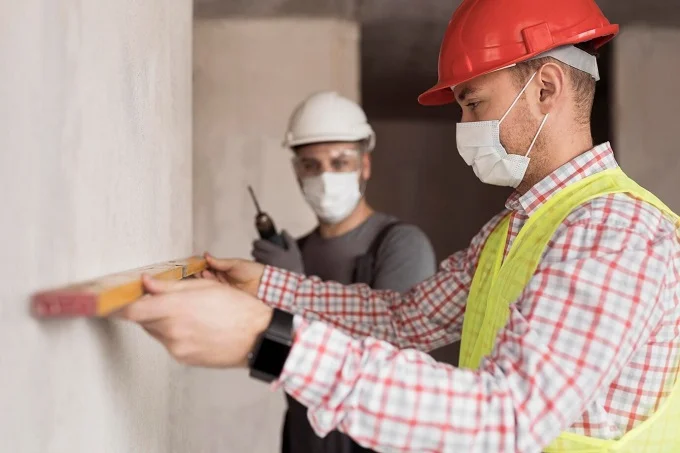Siding Replacement Process Step by Step Undertaking a siding replacement project is a significant step toward improving your home’s exterior appearance and protection against the elements. Understanding the process can alleviate anxiety and help you prepare adequately. This article outlines the siding replacement process step by step, providing detailed insights to guide you through this transformative journey.
Assessment and Planning
The first phase involves a thorough assessment of your existing siding. A professional Glenview siding contractor will inspect for signs of damage, such as warping, cracking, rot, or mold. This evaluation determines whether a full replacement is necessary and identifies any underlying issues that need addressing.
During planning, you’ll select the siding material that best suits your needs, considering factors like durability, aesthetics, maintenance, and cost. Popular options include vinyl, fiber cement, wood, and engineered wood, each with its advantages and price points ranging from $2 to $12 per square foot.
Obtaining Permits and Scheduling
Before work begins, necessary permits must be secured according to local regulations. Permit costs can range from $200 to $500. Scheduling the project at a convenient time minimizes disruptions. Weather conditions are also considered, as extreme temperatures or precipitation can affect installation quality.
Preparation of the Worksite
On the scheduled start date, the contractor prepares the worksite. This includes setting up scaffolding or ladders and protecting landscaping and outdoor features with tarps. Safety measures are implemented to ensure the well-being of workers and residents throughout the project.
Removal of Old Siding
The existing siding is carefully removed, starting from the top and working downward. This process may take 1 to 2 days for an average-sized home. Disposal fees for old siding materials can add $500 to $1,000 to the project cost. During removal, the contractor checks for any damage to the underlying structure, such as rot or pest infestations, which must be repaired before new siding is installed.
Inspection and Repairs
Once the old siding is removed, a thorough inspection of the home’s exterior sheathing and framing is conducted. Any damaged areas are repaired or replaced to ensure a solid foundation for the new siding. Addressing issues at this stage prevents future problems and can save money by avoiding more extensive repairs later.
Installation of Weather Barrier (Underlayment)
A weather-resistant barrier, such as house wrap, is applied to the exterior. This barrier provides an additional layer of protection against moisture and air infiltration, enhancing energy efficiency. Proper installation is crucial, as gaps or overlaps can compromise its effectiveness.
Installation of Insulation (Optional)
Adding insulation beneath the siding is an option that improves thermal performance. Insulation materials like foam boards can reduce energy costs by up to 15%, providing savings on heating and cooling bills. While this adds to the upfront cost, the long-term benefits often justify the investment.
Installation of New Siding
The new siding installation begins, following manufacturer guidelines to ensure warranty compliance and optimal performance. The process typically starts at the bottom of the house, with each panel or board carefully aligned and secured. For a standard 2,000-square-foot home, installation can take 5 to 7 days, depending on the material and complexity.
Special attention is given to areas around windows, doors, and corners, where trim pieces are installed for a seamless appearance. Flashing is used to prevent water intrusion, particularly above openings and horizontal joints.
Painting or Finishing (If Required)
Some siding materials, like fiber cement or wood, may require painting or staining after installation. This step not only enhances aesthetics but also provides additional protection against the elements. High-quality exterior paint can last 10 to 15 years, reducing the need for frequent maintenance.
Final Inspection and Cleanup
Upon completion, a final inspection ensures that the siding is installed correctly and meets all quality standards. The contractor checks for proper alignment, secure fastening, and that all finishing touches are in place. Cleanup involves removing debris, dismantling scaffolding, and restoring the property to its original condition.
Post-Installation Care and Maintenance
- Your contractor will provide guidance on caring for your new siding to maximize its lifespan. Regular maintenance, such as annual cleaning and prompt repair of any damage, can extend the siding’s durability. For example, vinyl siding requires minimal upkeep, while wood siding may need periodic painting or sealing.
Summary
Understanding the siding replacement process empowers you to make informed decisions and ensures a smoother experience. Partnering with a trusted Glenview siding contractor guarantees professional execution at each step, from initial assessment to final inspection. By investing time in planning and selecting quality materials, you enhance your home’s curb appeal, energy efficiency, and overall value. The transformation not only protects your home but also provides a renewed sense of pride in your property’s appearance.

